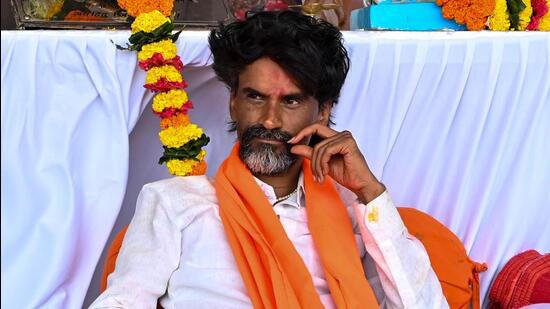If you’re wondering why Mumbai’s heart has been racing with energy and tension, the answer is simple—the Maratha reservation protest has gripped the city like never before. At the center of it all stands hunger-striker Manoj Jarange Patil, a name synonymous with unwavering resolve, and the Bombay High Court’s latest deadline that turned Azad Maidan into the battlefield for justice. Add to the mix the influential cabinet minister vikhe patil, and you’ve got a saga of power, passion, and public sentiment that’s hard to ignore.
The Maratha Quota Movement: A Quick Refresher
Let’s cut through the noise—why is this agitation happening? For years, Marathas have been rallying for a slice of government jobs and educational quotas under the OBC category. Their demand: full implementation of the Satara and Hyderabad gazettes, which would help secure their reservation status.
Bombay High Court’s D-Day: The Clock Strikes 3 PM
Imagine standing in a packed stadium as the referee blows the final whistle—that’s how charged Mumbai felt when the Bombay High Court ordered all protesters to clear major arteries by 3 pm. The pressure was palpable, and police swung into action—loudspeakers blaring, vehicles moving, and the city bracing for the unknown.
Azad Maidan: Protesters’ Sanctuary and Symbol
Azad Maidan wasn’t just an open ground during this agitation—it morphed into a sanctuary for Maratha unity and hope. Protesters, led by Jarange Patil, were adamant about staying put till their demands were met. Like a fortress in the middle of a storm, this historic spot became the epicenter for not just protest, but peaceful resilience.
Manoj Jarange Patil: The Man on Hunger Strike
Here’s a man who’s refused to leave even when threatened with legal action and, potentially, arrest. Jarange Patil’s hunger strike is both weapon and shield—a metaphorical torchbearer for the cause, lighting up hope and, at the same time, burning the midnight oil against injustice. His message was crystal clear: “Even if I die, stay peaceful; don’t inconvenience Mumbai. Follow the laws, stay united.”
High Court’s Stern Warning: Law, Order, and Consequence
The Bombay High Court, far from being a silent observer, issued stern warnings—comply, or face contempt and costs. Mumbai couldn’t afford chaos; commuters and businesses felt the pinch as traffic snarled and public transport choked. The city’s pulse skipped a beat, waiting for resolution.
Police Response: Keeping the Peace Amidst Passion
Mumbai Police didn’t mince words or actions. Deployments ran thick with Rapid Action Force personnel. They cleared illegally parked trucks and buses while urging Marathas to confine themselves to Azad Maidan. The goal was simple: ensure demonstrators’ safety, maintain peace, and restore the city’s rhythm.
Public Sentiment: A Test of Patience and Unity
Public reactions swung between empathy for the Maratha cause and irritation at the everyday disruptions. It was, in many ways, a test—a tug-of-war between rightful agitation and civic duty. Some citizens joined in solidarity; others grumbled about the inconvenience.
The Government’s Role: Dialogue, Decisions, and Deadlocks
This wasn’t just a Maratha versus State standoff. The government, led by a sub-committee spearheaded by vikhe patil, tried to play mediator, calling for calm and promising legal solutions for the gazette implementation. They met with legal experts, CM Devendra Fadnavis, and stressed that Maratha interests wouldn’t compromise OBC quotas. The dialogue wove a delicate balancing act, with vikhe patil repeatedly urging Mumbai to empathize with protestors.
Vikhe Patil: The Cabinet Commander
Here’s the main focus—vikhe patil, leading the cabinet sub-committee on Maratha quota, combines political strategy with sensitive social outreach. He’s the bridge between government action and Maratha demands, tirelessly seeking a solution that won’t topple the existing reservation framework. His approach? Clarity and patience, even as he criticized other politicians for previous failings. His willingness to connect with legal experts and Jarange Patil—a sign of his inclusive strategy—puts him at the nerve center of this historic movement.
The Gazettes: Satara, Hyderabad, and the Challenge Ahead
The Satara and Hyderabad gazettes are not just documents in this fight—they’re the passports to Maratha reservation. If implemented, thousands of lives could change overnight. But, the legal and political roadblocks are daunting, and vikhe patil and his team are analyzing every verdict and opinion before taking the plunge.
Moving Forward: What Next for Mumbai and the Marathas?
As this agitation enters the next phase, all eyes remain on Azad Maidan, Jarange Patil’s persistence, and vikhe patil’s strategic efforts. Will the demands be met? Can quiet diplomacy outshine loud protests? Only time and patience—and probably a fresh government notification—will tell.
Conclusion
The Maratha quota agitation in Mumbai is a living metaphor—a storm brewing with passion, resilience, and the spirit of civil rights. With vikhe patil and Manoj Jarange Patil at the helm, the outcome remains uncertain, but the cause has etched itself into the city’s memory. Whether Mumbai emerges stronger or more divided will depend on the next moves from both government and protesters. Until then, Azad Maidan stands as a testament to peaceful resistance in the face of adversity.
End Note
This story is far from over. The struggle for justice, for recognition, and for a fair quota continues. As the city watches, so does all of Maharashtra—and the rest of India. Stay tuned, stay engaged, and above all, stay informed about the evolving role of vikhe patil and the future of the Maratha reservation movement.







